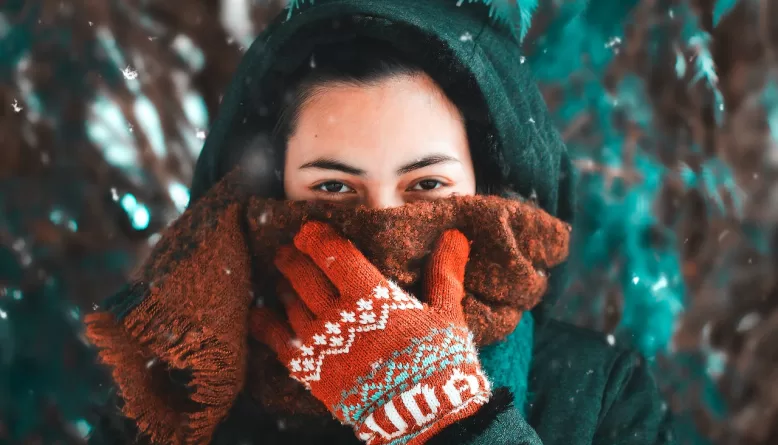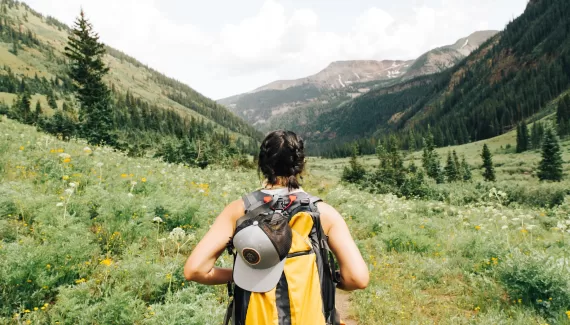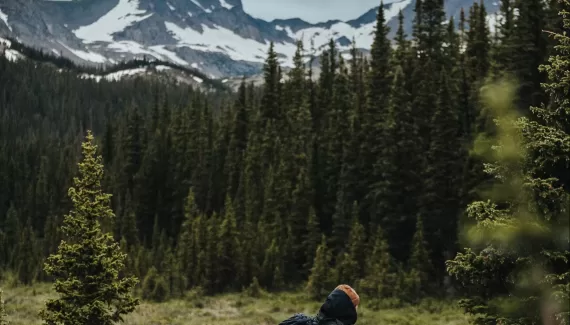At the point when the weather conditions outside are shocking, it’s critical to ensure you’re dressed suitably for a winter hike. This implies something beyond tossing on some pants and a coat. To hike securely and serenely in a winter climate, you want to focus on a couple of key things.
In the first place, you really want a decent set of boots. Search for boots that are waterproof and have great footing. They should likewise be protected to keep your feet warm. Second, you’ll need a coat that is both wind- and water-resistant. A coat with a hood is a decent choice to assist with safeguarding your head and face from the elements. Third, pick pants that are additionally wind and water-safe. Pants with a lot of pockets are likewise really smart since they give you a spot to store things like gloves and caps. Ultimately, remember frills like gloves, caps, and scarves. These things will help you stay warm and dry on your hike.
1. Choosing the Best Base Layer for Winter Hiking
One of the main points of interest while dressing for a hike in winter is remaining warm and dry. A base layer that will wick away perspiration and keep you warm is fundamental. Search for a base layer that is made of moisture-wicking material, like fleece or engineered textures. Fleece is an extraordinary choice for a base layer since it is both warm and breathable. Manufactured textures, like polyester or nylon, are additionally great choices for a base layer since they dry rapidly and are less inclined to trap sweat and scents.
2. Choosing the Perfect Protective Layer for Hiking
While you’re hiking in the winter, you really want to ensure you have a protective layer to keep the intensity in. This can be anything from a weighty coat to a lighter down coat.
A weighty coat will be your smartest option on the off chance that you’re hiking in a truly chilly climate. It ought to be made of a waterproof and windproof material, similar to Gut Tex, to keep you dry and comfortable. Remember to layer up under your jacket with a couple of slender layers of dress. This will assist with catching intensity and keep you warm.
A lighter downy is a decent choice for a milder winter climate. It’s essential to pick wool that is likewise waterproof and windproof. Once more, layering up with slight layers under will assist with keeping you warm.
Regardless, ensure you have a decent set of winter boots. They ought to be waterproof and protected, to keep your feet dry and warm. What’s more, remember to pack a couple of thick socks!
Related Article: Day Hike Essentials: What to Bring for a Successful Trip
3. Waterproof and Breathable: Selecting the Ideal External Layer for Hiking
While hiking in winter, wearing a waterproof and breathable external layer is important. This will assist with keeping you dry and agreeable and will likewise keep you from getting excessively cold.
There are a couple of interesting points to consider when picking a waterproof and breathable external layer for winter hiking. First and foremost, you need to ensure that the piece of clothing is produced using waterproof material. This could be something like Violence Tex or Nylon. Also, you really want to ensure that the article of clothing is breathable. This implies that it will permit your body to inhale and won’t make you sweat excessively. At long last, you want to ensure that the piece of clothing is protected. This will assist with keeping you warm, even in the coldest circumstances.
When picking a waterproof and breathable external layer, taking these factors into account is significant. There are various brands and kinds of clothing accessible, so it merits doing some exploration to track down the best one for you.
4. Dry and Warm: Choosing the Right Socks for Hiking
Accepting that you should hike in a chilly climate, you ought to dress in layers. The main layer ought to be a base layer that will wick away perspiration and keep you warm. A decent set of socks is fundamental for an agreeable hike. They ought to be made of a material that will keep your feet dry and warm. In the event that you are hiking in snow, you will need a couple of waterproof socks.
Your sock decision will depend on the circumstances you will climb into and the kind of shoe you will wear. Assuming you are hiking in chilly, wet conditions, you will need a thicker sock that will protect your foot and provide cushioning. A flimsy, fast-drying sock is better for hotter circumstances or, on the other hand, on the off chance that you are hiking in water.
There are a wide range of brands and sorts of socks available. Do some exploration to find a sock that will work best for yourself and the circumstances you will hike in.
5. Choosing Hiking Boots for Foot Safety and Traction
One of the main interesting points while hiking in the winter is what sort of footwear you should use to safeguard your feet and give them a foothold. Winter hiking boots ought to be waterproof and protected to keep your feet warm and dry, and they ought to have a decent track to give you a foothold on frigid or snow-covered trails.
There are a couple sorts of winter hiking boots to browse, contingent upon your necessities. Rock-solid winter boots are intended for outrageous circumstances and are commonly made of tough materials like cowhide or nylon. These boots are generally heavier and more costly, but they will keep your feet warm and dry in the cruelest circumstances.
In the event that you don’t need the additional security of an uncompromising boot, a lighter-weight boot might be a superior choice. These boots are regularly made of waterproof materials like Blood Tex, and they might have protection to keep your feet warm. These boots are in many cases lighter and more agreeable than uncompromising boots, and they are a decent choice for hikes in moderate to cold circumstances.
Regardless of what kind of winter hiking boot you pick, ensure it fits well and is comfortable to stroll in. The most important thing you need on a hike is to manage rankles or sore feet. When you have the right boots, you’ll be prepared to take on any winter hike!
On the off chance that you anticipate hiking in the winter, make certain to dress in layers. Wearing such a large number of layers can make you sweat, which will make you cold once you quit moving. It means quite a bit to find a balance between being excessively hot and excessively cold. Wear a base layer of manufactured material to wick away perspiration, a center layer of protection, and a waterproof external layer. Make certain to wear a cap and gloves and to cover your face with a scarf or facial covering to safeguard yourself from the virus.
Related Article: Don’t Hit the Trails Without These 10 Hiking Essentials: Your Ultimate Checklist for Beginners


